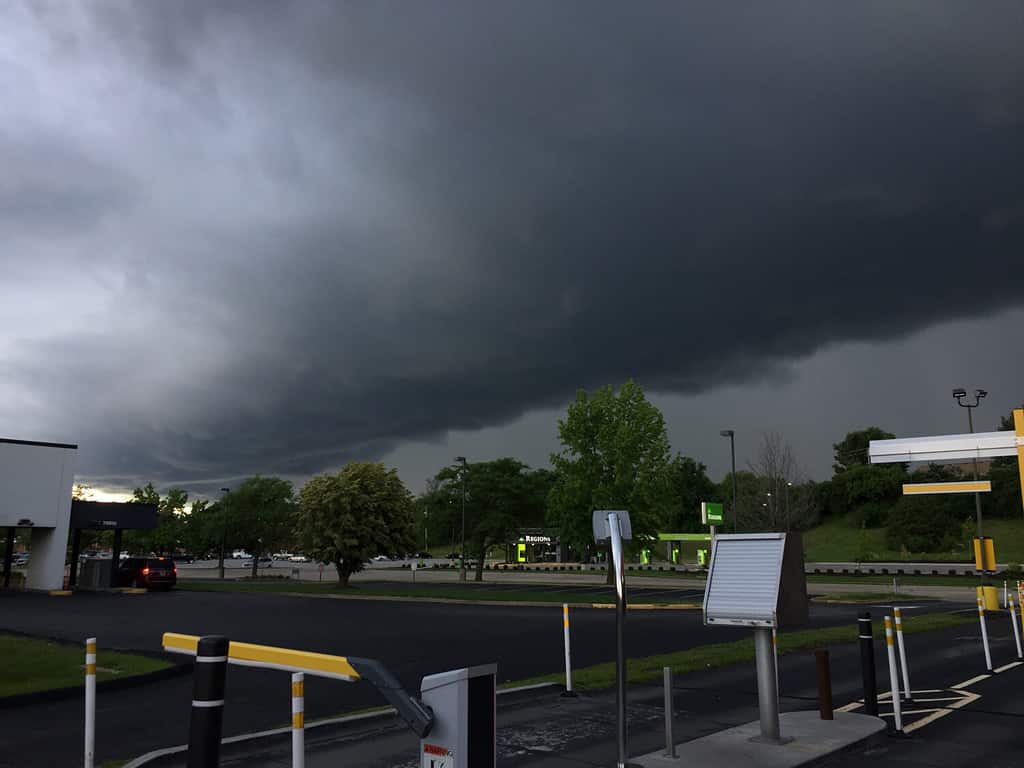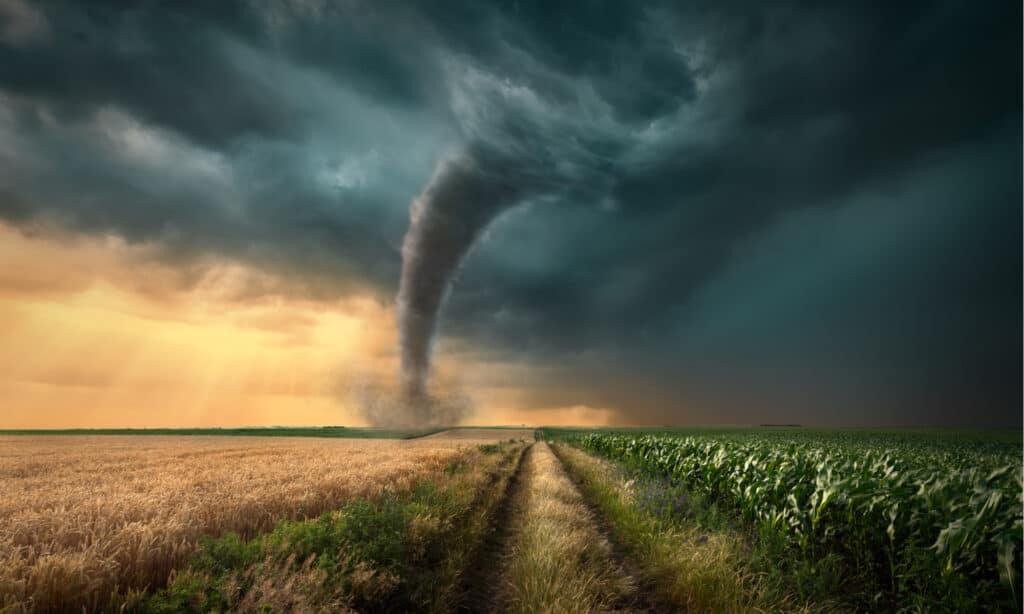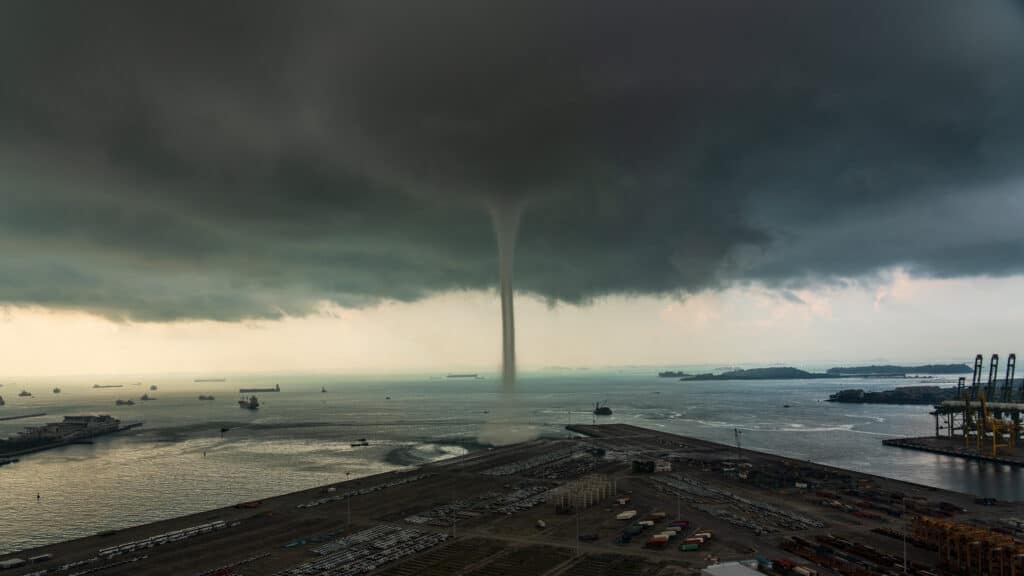Due to the devastation that follows a tornado, the government has issued tornado watches and warnings. A tornado watch states the likelihood of a one versus a warning that it will pass through an area. However, some people don’t know the finite difference, so we’ll review a tornado watch vs. warning.
A tornado is one of the most devastating natural disasters that can happen besides an earthquake or tsunami. They can form rapidly without much warning, and once they hit, they leave behind a trail of destruction. Luckily, the government has done an excellent job of ensuring safety precautions are in place.
What Is a Tornado Watch?

Missouri town as it shows tornado-like weather conditions.
©Caleb Kroll/Shutterstock.com
The National Weather Service (NWS) is in charge of issuing a tornado watch. A tornado watch is a service that monitors atmospheric conditions to see if there is a chance of a tornado. If conditions look like a tornado is possible, NWS will broadcast a watch to the area.
NWS will often issue the watch for the entire area affected by the tornado. Tornadoes typically cover one to two miles in distance and 50 yards in width. Despite most of them only lasting a few miles, tornadoes can cause mass destruction.
One example is one from Ellington, MO, to Princeton, IN. The tornado traveled 219 miles in March of 1925. So, one tornado can affect several counties or states.
So, in simple terms, a tornado “watch” means that you need to keep your eye out for one. There is only a chance because certain conditions, such as a cloud of debris at ground level, a strange quiet after a thunderstorm, or a change in the sky’s color, can be an indication. Despite these conditions being present, a tornado might not form.
How Long Does a Tornado Watch Last?

Wind speed is measured by an anemometer to determine if a tornado is likely.
©Arthorn Sakland/Shutterstock.com
In most counties, tornado watches usually persist for four to eight hours. The National Oceanic and Atmospheric Administration’s (NOAA) ‘s Storm Prediction Center (SPC) issues the watch. Generally, the SPC issues the watch a few hours before a tornado hits. This is to give residents plenty of time to prepare to leave the area and get to safety.
What Should You Do During a Tornado Watch?
When a tornado watch is issued, it’s recommended that you head to a basement or inside a room with no windows. Then, you should find something sturdy to stand or sit underneath. Popular places include underneath a table or workbench.
During this time, it’s important to grab essentials like food and water. You will also want to grab blankets and pillows, as it could take a few hours before a tornado passes. For more information on prepping, you can check out the Centers for Disease Control and Prevention (CDC) guidelines on staying safe during a tornado.
What is a Tornado Warning?

A tornado that has already formed and is beginning to travel.
©Rasica/Shutterstock.com
The difference between a tornado watch vs. warning comes down to when a tornado has already been spotted. A warning will be issued if a tornado has already formed. This warning means a tornado is coming your way, and you and your family must get to safety immediately.
Tornadoes can form in under 10-20 minutes, which is why tornado warnings are often necessary. Aside from that, a tornado warning helps residents get to safety quickly, as there isn’t much time before a tornado hits.
Once one does, it’s almost impossible to get away from one. Some move very slowly and others can move as fast as 60 miles per hour. A slow tornado also can rapidly change size and speed.
How Before the Tornado Hits?

A tornado traveling across a river about to pass through a small town.
©Hit1912/Shutterstock.com
The National Weather Service will issue a tornado warning for an average of 13 minutes. Inside the notification, you will get information on where the tornado was last spotted and where it will travel. If a warning is issued, it generally means that a tornado is on its way to your area, and you must get to a safe place.
What Should You Do During a Tornado Warning?
Unlike a tornado watch, you won’t have time to gather your belongings. Instead, you will want to get your family to a safe area in your home. Most families gather in a basement, but if you don’t have one, you should get into a room that doesn’t have any windows.
Rooms like a bathroom, closet, or hallway free from windows are perfect. Ensure you are either up against a wall or underneath a sturdy structure. That way, if any debris falls, you will be protected.
The Bottom Line
While most tornadoes won’t be harmful, it’s always best to be prepared. A tornado watch vs. warning is an excellent tool that can help give residents extra time to prepare and keep themselves safe.
Both of these tools are used to help ensure that everyone is unharmed. If you live in a state with tornadoes, like Indiana or Illinois, you’ll likely even have tornado sirens installed that will go off until the event ends.
The photo featured at the top of this post is © artofvisionn/Shutterstock.com
Thank you for reading! Have some feedback for us? Contact the AZ Animals editorial team.






